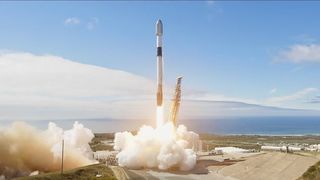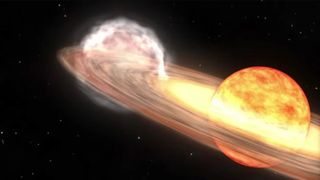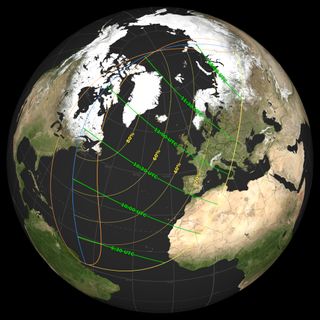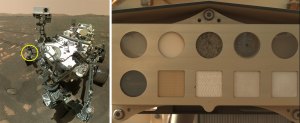SpaceX launched a stack of Starlink internet satellites to orbit from California and returned the booster to Earth Friday afternoon (March 26). The Falcon 9 rocket flying the mission, Starlink 11-7, carried a total of 27 satellites to orbit from Vandenberg Space Force Base, in California. The SpaceX rocket lifted off from Space Launch Complex-4E at 6:11:40 p.m. ET (2211 GMT). A little more than eight minutes later, the rocket’s first-stage booster, B1063, touched down on the SpaceX droneship “Of Course I Still Love You,” stationed in the Pacific Ocean.…
Read MoreDay: March 26, 2025
Hold onto your hats! Is the ‘blaze star’ T Corona Borealis about to go boom?
A new set of predictions for the so-called “blaze star,” T Corona Borealis suggests the star might go nova on either March 27, November 10, or June 25, 2026. However, other astronomers are skeptical about these predictions, which are based on an implied pattern in the explosive system’s orbital configuration, “T Corona Borealis [T CrB] is a unique object that has fascinated amateur and professional astronomers for more than a century,” Léa Planquart of the Institut d’Astronomie et d’Astrophysique at the Université Libre de Bruxelles in Belgium, told Space.com. T…
Read MoreNASA’s X-59 Completes ‘Cruise Control’ Engine Speed Hold Test
2 min read Preparations for Next Moonwalk Simulations Underway (and Underwater) NASA’s X-59 quiet supersonic research aircraft sits on a ramp at Lockheed Martin Skunk Works in Palmdale, California, during sunset. The one-of-a-kind aircraft is powered by a General Electric F414 engine, a variant of the engines used on F/A-18 fighter jets. The engine is mounted above the fuselage to reduce the number of shockwaves that reach the ground. The X-59 is the centerpiece of NASA’s Quesst mission, which aims to demonstrate quiet supersonic flight and enable future commercial travel…
Read MoreWhat will happen during the partial solar eclipse of March 2025?
What a difference a year makes! Just a year ago, countless millions across North America were anxiously awaiting the “great North American total eclipse of the sun” on April 8. Now, less than a year later, on Saturday, March 29, another eclipse of the sun will take place, but it’s quite likely that the prospective viewing audience will be considerably smaller. To produce this eclipse, the moon’s shadow falls chiefly on the north polar regions of Earth. Keep up to date with the latest solar eclipse news and events with…
Read MoreNorman Rockwell Commemorates Gemini Program with Grissom and Young
Astronauts John Young and Gus Grissom are suited for the first flight of the Gemini program in March 1965. NASA loaned Norman Rockwell a Gemini spacesuit in order to make this painting as accurate as possible.
Read MoreHow Can I See the Northern Lights? We Asked a NASA Expert: Episode 54
2 min read Preparations for Next Moonwalk Simulations Underway (and Underwater) How can I see the northern lights? To see the northern lights, you need to be in the right place at the right time. Auroras are the result of charged particles and magnetism from the Sun called space weather dancing with the Earth’s magnetic field. And they happen far above the clouds. So you need clear skies, good space weather at your latitude and the higher, more polar you can be, the better. You need a lot of patience…
Read More



